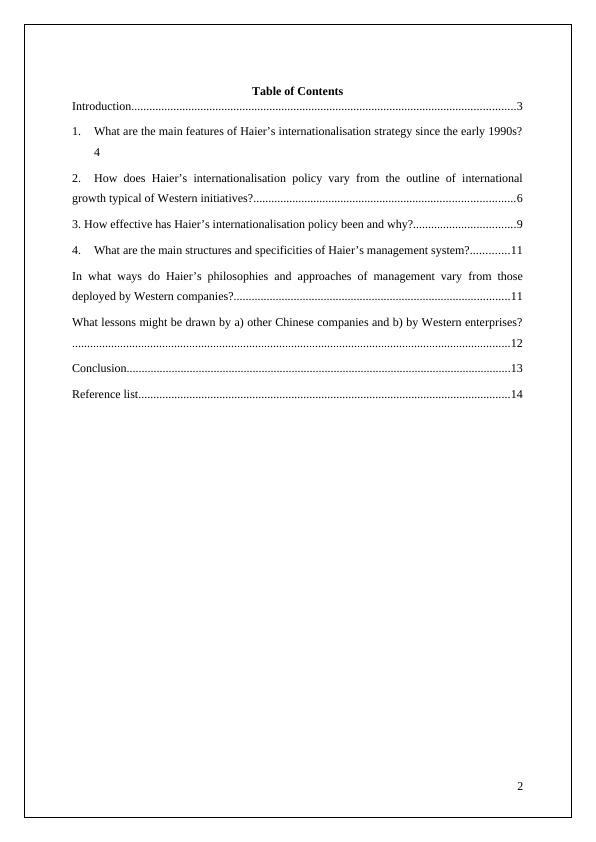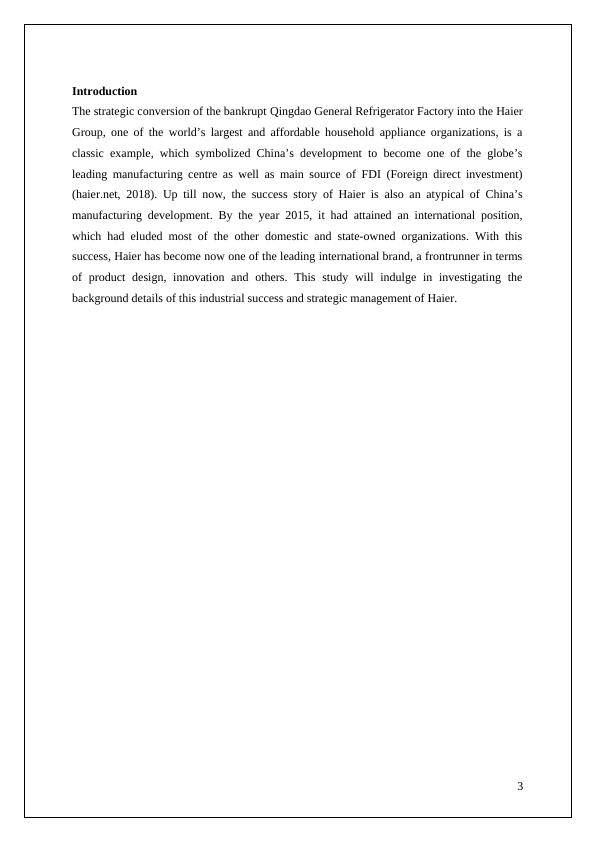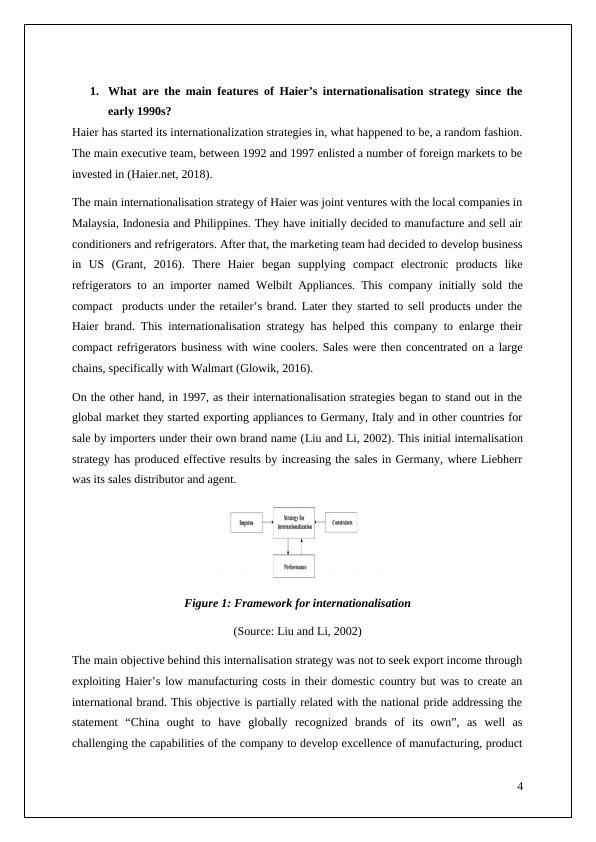Haier Group's Internationalisation Strategy: A Case Study Analysis
If a man could flow with the stream, grow with the way of nature, he’d accomplish more and he’d be happier doing it than bucking the flow of the water. —W. L. GORE Malcolm Gladwell (author of The Tipping Point and Outliers) described his visit to W. L. Gore & Associates (Gore) as follows: Copyright © 2016. Wiley. All rights reserved. When I visited a Gore associate named Bob Hen, at one of the company’s plants in Delaware, I tried, unsuccessfully, to get him to tell me what his position was. I suspected, from the fact that he had been recommended to me, that he was one of the top executives. But his office wasn’t any bigger than anyone else’s. His card just called him an “associate.” He didn’t seem to have a secretary, one that I could see anyway. He wasn’t dressed any differently from anyone else, and when I kept asking the question again and again, all he finally said, with a big grin, was, “I’m a meddler.”1 The absence of job titles and the lack of the normal symbols of hierarchy are not the only things that are
Added on 2023-06-03
About This Document
Haier Group's Internationalisation Strategy: A Case Study Analysis
If a man could flow with the stream, grow with the way of nature, he’d accomplish more and he’d be happier doing it than bucking the flow of the water. —W. L. GORE Malcolm Gladwell (author of The Tipping Point and Outliers) described his visit to W. L. Gore & Associates (Gore) as follows: Copyright © 2016. Wiley. All rights reserved. When I visited a Gore associate named Bob Hen, at one of the company’s plants in Delaware, I tried, unsuccessfully, to get him to tell me what his position was. I suspected, from the fact that he had been recommended to me, that he was one of the top executives. But his office wasn’t any bigger than anyone else’s. His card just called him an “associate.” He didn’t seem to have a secretary, one that I could see anyway. He wasn’t dressed any differently from anyone else, and when I kept asking the question again and again, all he finally said, with a big grin, was, “I’m a meddler.”1 The absence of job titles and the lack of the normal symbols of hierarchy are not the only things that are
Added on 2023-06-03
End of preview
Want to access all the pages? Upload your documents or become a member.




